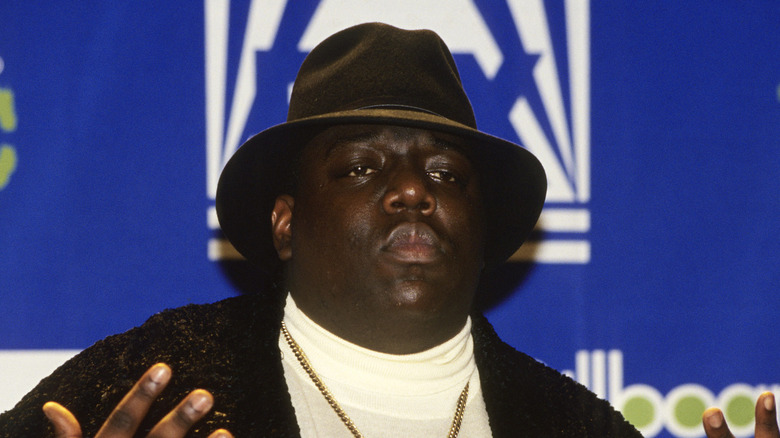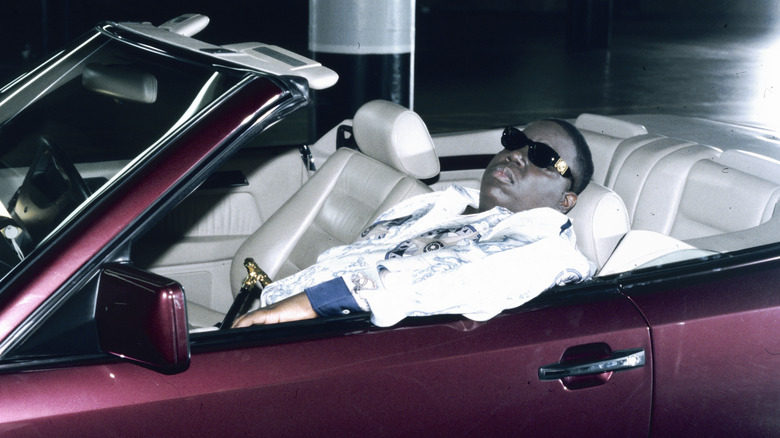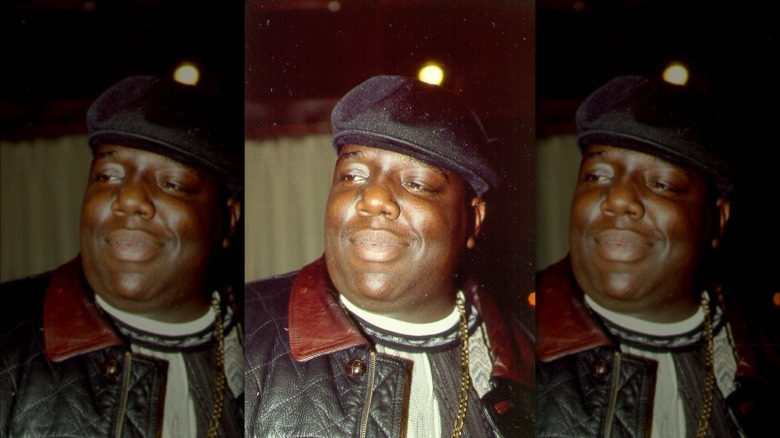Biggie Smalls' Autopsy Report Has Some Disturbing Details
The death of The Notorious B.I.G., or Biggie Smalls, marked a dark period in music history. On March 9, 1997, the rapper, whose real name was Christopher Wallace, was fatally shot in a drive-by shooting in Los Angeles. He was 24. Smalls was in the passenger seat when an Impala stopped next to the Chevy Suburban driven by Gregory "G-Money" Young at a red light and opened fire. The case has never been solved. In December 2012, authorities released Smalls' autopsy report in hopes it would lead to new clues.
It didn't, but it revealed there was only one fatal shot and that Smalls was sober. In six months, the hip-hop scene lost two of its greatest rappers after the drive-by shooting of Tupac Shakur the previous September. Shakur's mysterious death was big on Smalls' mind ahead of his own murder. Just days before his death, Smalls revealed he feared for his safety amid violence experienced by other Black celebrities.
"It's not just rappers," Biggie told San Francisco's KYLD-FM on March 5, 1997 (via MTV News). "They gonna attack anybody that's a large figure. They did it to (Michael) Jordan. They did it to (Mike) Tyson. They did it to Bill Cosby. They gonna' attack you if you on top." Smalls argued he needed security because he was unable to fend for himself without consequences. "I can't beat everybody up, I'll go to jail," he said. Despite his worries, Smalls suffered a similar fate to his friend-turned-rival just months earlier.
Only one of four shots that struck Biggie Smalls was fatal
Biggie Smalls was shot four times. One bullet entered his left forearm, another hit him in the back, and yet another one entered his left thigh. None of those could have killed him, the autopsy report detailed (via The Los Angeles Times). The only fatal shot struck him in the right hip and traveled up to his left shoulder, piercing through his colon, liver, heart, and lung on the way there. The medical examiners couldn't determine in which order the shots were fired.
All the bullets hit Smalls after going through the door of the Suburban. The Notorious B.I.G. was taken to Cedars-Sinai Medical Center to undergo emergency surgery and was pronounced dead at 1:15 a.m., about 45 minutes after the shooting. The examiners determined Smalls was sober, as toxicology analyses found no drugs or alcohol in his blood. The unexpected release of the autopsy report 15 years later was opposed by the rapper's family.
"What legitimate lead could be stimulated by releasing an autopsy that says Mr. Wallace was shot. When everyone knows that. Why don't they release some of the clues they have?" the lawyer for Small's mother told the Los Angeles Times. The Los Angeles P.D. apologized to the Wallaces for making the report public without notifying them beforehand. "Obviously this has been a challenging case for us to solve," Captain Billy Hayes told NBC News, reiterating the department's intentions to reignite interest to generate new leads.
Biggie Smalls' family sued L.A.P.D. and the City of Los Angeles
There is no shortage of theories surrounding Biggie Smalls' death. Police initially looked into a member of the Crips gang who allegedly had personal financial reasons to go after Smalls, the Los Angeles Times reported in 1997. But the investigation hit a dead-end. In his 2002 book "LAbyrinth," Randall Sullivan used information from former Detective Russell Poole to argue that Death Row Records co-owner Suge Knight, with the help of gang members and L.A.P.D. officers, was behind Smalls and Tupac Shakur's killings, CNN reported.
Sullivan's drew plenty of criticism, but not from Smalls' family. Based on his evidence, Smalls' wife, Faith Evans, his mother, Voletta Wallace, and two of Smalls' kids sued the L.A.P.D. and the City of Los Angeles for allegedly sabotaging the investigation, CNN reported in 2002. "[Police Chief Bernard] Parks intentionally, willfully and recklessly delayed and stopped the investigation as soon as it became apparent officers employed by the Los Angeles Police Department were involved in the murder," the family alleged in the suit.
After a series of legal back-and-forths, the wrongful death lawsuit was dismissed in 2010, per The New York Times. The family's lawyer, Perry R. Sanders Jr., asserted they were withdrawing the suit because authorities had re-opened the investigation. "The bottom line is that we did this because the family only wanted justice to be done," Sanders said. Despite their renewed efforts, the Los Angeles police never made any arrests.



